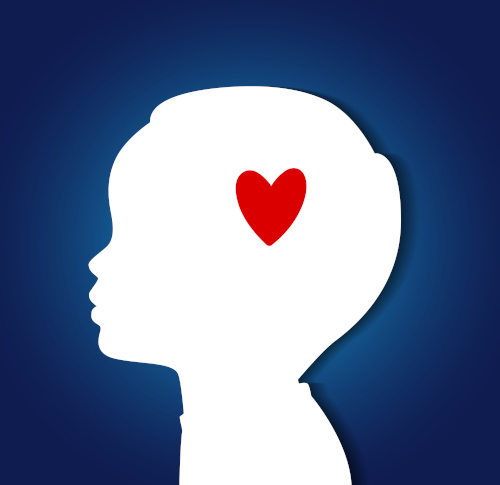Following the 2020-2021 school year, educators can look back with pride–and exhaustion–on all we have learned. We have learned to teach in brand new modalities like remote and hybrid learning, foster more student independence, and adapt instruction to a huge variety of learning needs.
But one of the most important lessons to come from this pandemic year is a greater focus on the importance of social-emotional learning.
Throughout this school year, educators, coaches, and school leaders have engaged in virtual professional development and one-on-one coaching sessions to hone their social-emotional learning skills and knowledge to meet the needs of all learners. The following are some of the most effective strategies all educators should take within them into next year.
Be intentional about weaving social-emotional learning into the day
In a virtual professional development session, one school leader shared, “I think social-emotional learning is a hot topic right now, but are people really doing it? Do they really know what it means?” This begs the question, “Do we know how to intentionally incorporate social-emotional learning into class culture and instruction?” Continuing to intentionally incorporate social-emotional learning into daily habits and routines next school year can be monumental for educators and students.
- Thresholding to greet students at the door: This is an old strategy that gained new importance during remote learning this year. Personally greeting students as they enter the classroom sets the tone for the student’s day and incorporates other social-emotional learning skills such as communicating effectively, actively listening, and establishing and maintaining a healthy relationship.
- Brain breaks: In another virtual PD session, one teacher shared, “This year, I have intentionally incorporated brain breaks several times throughout the day–and I want to continue doing it once we return to in-person learning.” This year we may have noticed the need for small breaks as students struggled to focus on line. But even back in the classroom, brain breaks can be used to manage emotions and promote self-management.
- Social-emotional learning check-in surveys: At the beginning of the school year, we may ask students to complete an interest survey, but ongoing student interest and emotional check-ins are key. Daily or weekly check-ins can help you gain a deeper understanding of students and foster relationships.
Build relationships
Establishing and maintaining relationships with students has always been essential. While teaching virtually, many educators explained to me the challenges they faced. From academic difficulties to students simply refusing to turn on their cameras, it all starts with the ability to build, create, and maintain a relationship with students. Here are some strategies to continuously incorporate relationship-building strategies next school year:
- Class meetings: Creating a safe space for students to discuss academic and non-academic subjects fosters community through teacher-to-student and peer-to-peer relationships. Teachers can also use this as a space for difficult conversations. Frequent class meetings build relationship skills such as communicating effectively, showing leadership in groups, and standing up for the rights of others.
- Office hours: Offering office hours for group and 1:1 student meetings helps teachers establish relationships with students. Teachers may have experimented with virtual office hour formats that they can take into next year, alongside in-person methods.
- Families and caretakers: Creating and maintaining relationships with families and caretakers this year presented teachers with challenges as well as opportunities for innovation and connection. As we return to the classroom, it’s important to involve families and caretakers in their child’s educational journey. Through positive interactions, two-way communication, and continuous classroom and school updates, we can build relationships with families and caretakers that benefit educators and students.
Establish a growth mindset
The power of a growth mindset is important in all teaching and learning modalities. One common theme in many 1:1 coaching sessions this year is that teachers noticed many students struggling with finishing assignments because they felt as though they couldn’t do it. Virtual learning may not have met every student’s academic needs, but there are several strategies teachers can use to establish a growth mindset:
- The power of Yet: When students express that they can’t do something, help them re-frame that thought to, “You can’t do it…yet.” Then, help students self-reflect and answer questions that help them understand why they can’t do the activity and the steps they need to take to complete the activity successfully in the future. The Power of Yet is related to Casel’s self-awareness competency.
- Create a safe space that allows for growth and risk-taking: Teach students about the importance of risk-taking. In coaching sessions, teachers have expressed how difficult it can be for students to share out because they are afraid of saying an incorrect answer. Some growth and risk-taking strategies for educators include: reflecting often, providing actionable and specific feedback, and celebrating success.
- Setting goals & reflective journaling: Help students to set academic and non-academic goals at the beginning of the week, and then reflect on their progress at the end of the week. Ask students to identify their successes and challenges and then elaborate and explain why. Have students share their goals with an accountability partner to build self-awareness, responsible decision-making, and relationship skills.
This year prompted educators to “think outside the box” to meet the needs of all learners in different learning modalities. While navigating the successes and challenges in teaching and learning, social-emotional learning was an essential topic.
As we return to in-person learning next year, there are several key ideas and learning strategies that educators can utilize to incorporate social-emotional learning. From building relationships to fostering a growth mindset, social-emotional learning has a positive impact on teaching and learning for students, teachers, and leaders.
- 4 ways to encourage play in education - April 25, 2024
- CoSN IT Leader Spotlight: Lisa Higgins - April 25, 2024
- It’s time to pay student teachers - April 25, 2024

